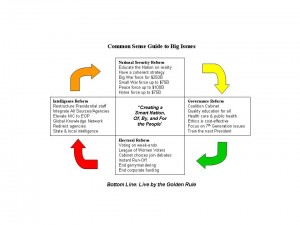
This is the highest level depiction of the Expeditionary Environment analytic model created by the Marine Corps Intelligence Center (MCIC) on the basis of Robert Steele's first graduate thesis on the remediation of revolution across multiple dimensions. With deep help from the Warfighting Center, this model ultimately defined 144 mission area factors, and in warfighter terms, three to five degrees of difficulty for each of those factors. To the best of our knowledge, no such model exists within the U.S. Intelligence Community, nor is this model still in use at MCIA.







